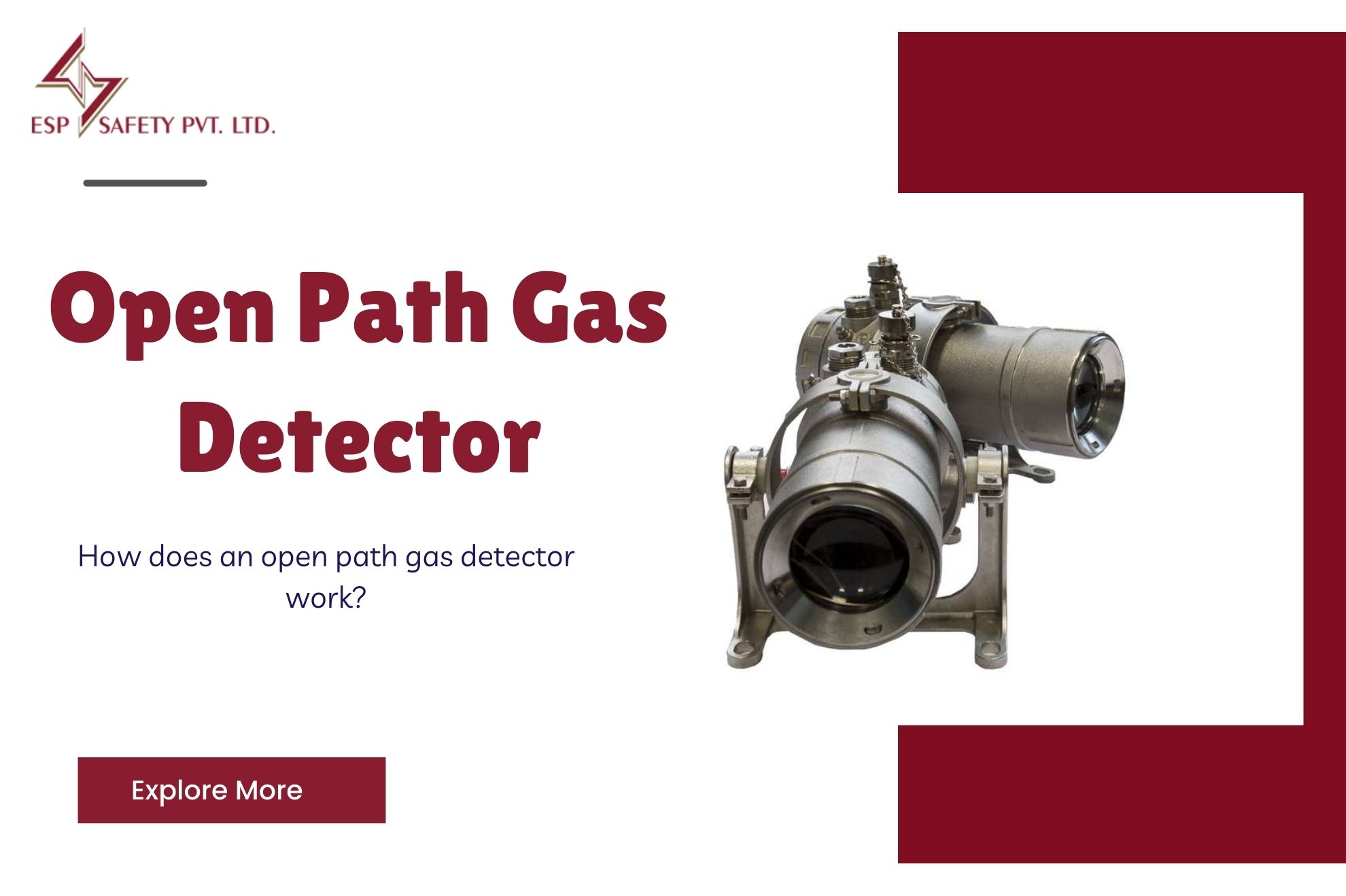An open path gas detector is a gas detection system for monitoring hazardous gases over a wide area. An open path gas detector work on the concept of an infrared absorption system. Unlike conventional detectors, which sample air at specific points, this one employs light beams to ascertain that there are noxious fumes in the vicinity. Typically used in industries like oil refineries or chemical plants. They are needed to track leaks of flammable or poisonous gases across vast spaces outdoors or within their facilities. Open path gas detectors respond more quickly than traditional point sensors. They usually cover bigger regions, and can still work well even when it’s very cold.
How does it work?
An open path gas detector work on the concept of infrared absorption spectroscopy. Here is how it works:
- Emitter Unit: The system involves an emitter unit, which produces a stream of infrared (IR) light. This unit usually has an IR source such as a light-emitting diode (LED) or a laser.
- Transmission of Beam: The emitted IR beam passes through the open space under observation, like a plant or outdoor area, propagating straight from the sender to the receiver unit.
- Interaction with Gas: If there are any molecules of gas along the path of the IR beam, some gases absorb particular wavelengths of infrared radiation. Each gas possesses its unique absorption spectrum, i.e., it absorbs light at certain specific frequencies only.
- Receiver Unit: On the other side of the monitored region lies a receiver unit that picks up the IR beam. It’s fitted with a detector capable of measuring the intensity received by IR light.
- Measurement for Absorption: This receiver measures intensity after passing across the monitored region. If there are no such gases present, then the received intensity will remain the same. However, if there are any gas molecules in the beam path, they will absorb certain wavelengths of IR light. Therefore, causing a decrease in intensity received.
- Gas Detection: This system detects if there are hazardous gases or not by investigating the level of intensity; it also determines their levels. Whenever the decrease in intensity surpasses a certain limit, it shows the existence of target gas over some concentrations. After this it triggers an alarm to warn people around or initiates safety precautions automatically.
- Calibration and Maintenance: Regular calibration and maintenance should be done on an open path gas detector to ensure its reliability and performance. This means checking whether there is sensitivity within range as well as identifying any other problems. Which can affect its operation, like dirt blocking beam path, among others.
Generally speaking, open path gas detectors continuously monitor wide areas for dangerous gases, thus giving early warnings that may save the lives of workers and protect property from potential threats.
Pros and Cons of Open Path Gas Detector
The pros of open path gas detectors are as follows:
- Open-Area Coverage: A single unit of open-path detectors can cover a wide range of areas, such as outdoor areas or large indoor spaces. It is therefore suitable for applications where it would be impractical or costly to monitor multiple points with individual sensors.
- Rapid Response Time: They usually have quicker response times than point detectors because they sample the entire beam path continuously. This fast detection helps reduce the propagation of dangerous gases and enhances emergency response efficiency.
- Detect Many Gases: Open path gas detectors can be set up to detect several gases at once. Thereby providing comprehensive monitoring of different hazardous substances present in the environment.
- Low Maintenance: Comparatively, open path gas detectors may need less maintenance than multiple-point detectors since they cover large areas using one device. This can save costs and reduce downtime for calibration as well as sensor replacement during use.
Cons of open path gas detectors:
- Limited Sensitivity: In terms of detecting low levels of gases, open path detectors are less sensitive than point detectors. This can cause them to not notice the presence of hazardous gases at such concentrations.
- Influence of Environmental Factors: Open path detector performance may be affected by environmental factors like wind speed, temperature gradients, and humidity. The dispersion of gases changes with these variables, which alters gas concentration measurement accuracy.
- Line-of-Sight Requirement: For proper operation between the emitter and receiver units, an unobstructed path should exist in open path detection systems. Any objects within this line-of-sight such as buildings, structures, or vegetation, will interfere with gas detection, thereby limiting coverage.
- Initial Cost: Deploying an open path gas detection system may cost more initially compared to using multiple point detectors, especially for large areas. Nonetheless, over time, savings on maintenance expenses as well as enhanced monitoring capabilities could make up for this investment.
Conclusion
To sum up, you have discovered what an open path gas detector is, how an open path gas detector work, and its advantages and disadvantages. Choosing an open path gas detector that is suitable for your business is an important step toward ensuring safety. At ESP Safety, we create products that meet the demands of the toughest industrial environments and applications. Our intelligent engineers and manufacturing facilities help us create products that meet quality standards. Your life’s safety is our priority.
